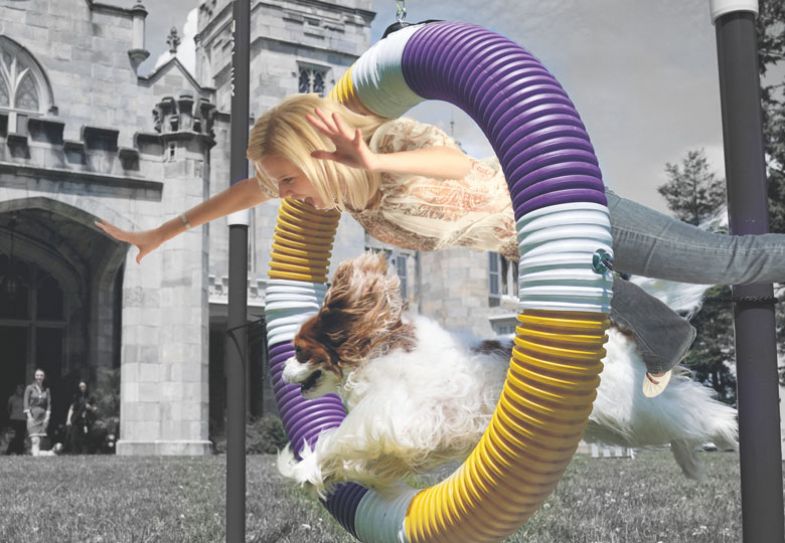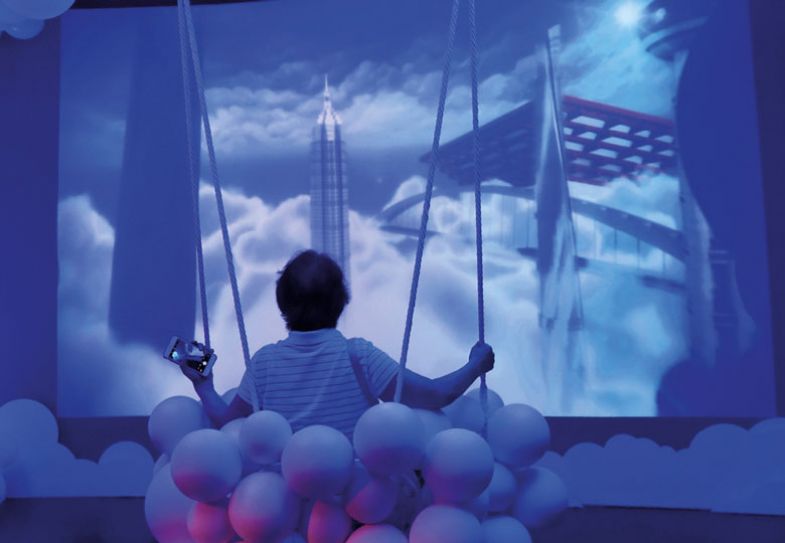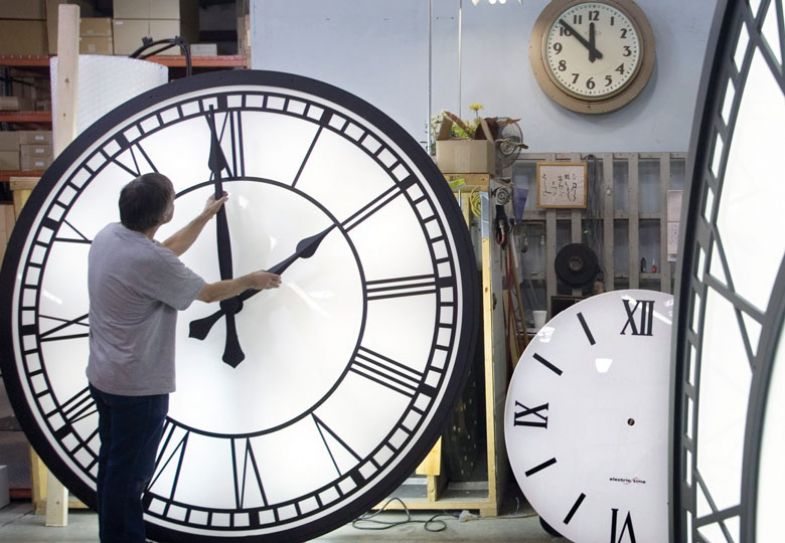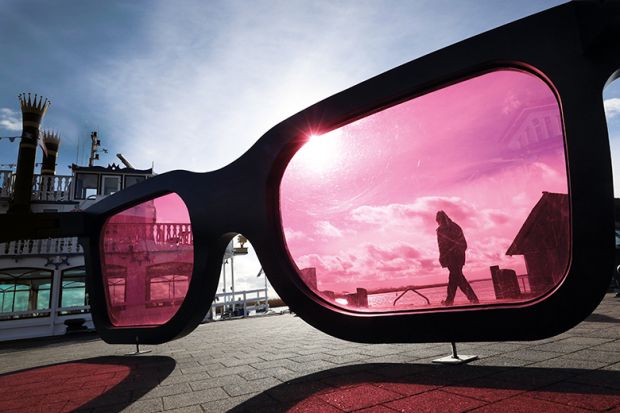Leave your troubles outside!
In a global sense, 2023 is not hugely different from 2022. But, for me, it is very different.
Like many, I trust that each succeeding year will be better, and I hoped that 2023 was going to be when we would leap gazelle-like into a brighter post-Covid-19 world. But sadly, 2023 in the UK seems an uglier and even more divisive place. The Ukraine war, intolerance, division, economic decline, unremitting ineptitude, strikes and just so much undiluted cruelty all grind the joy out of life.
Clearly, none of these horrors are my fault, but, as an aged white male, I sense accusatory glances from every direction. My blood pressure crept up, and I started to grind my teeth at night. My anxiety dream resurfaced, too – which involves me trying to save our young children from being attacked by a saltwater crocodile in the hall.
It occurred to me earlier this year that there were basically two possible strategies open to me. Retire, hide from the world and cultivate root vegetables. Which is always tempting. Alternatively, and influenced by the inimitable words of Joel Grey in the film Cabaret, “Leave your troubles outside! Life is disappointing? Forget it! In here, life is beautiful.”
I have left my troubles outside, embraced delusion and attended to that part of my world where I can make some difference.
The first significant change is how I start my day. BBC Radio 4’s Today programme has been my wake-up call since university. But no longer. I have replaced the unremitting litany of horrors and aggressive interviews with a much kinder awakening. BBC Radio 3 and classical music at breakfast. So I start the day with a smile.
I also leave earlier for the lab, stopping on the way for a coffee and, if feeling particularly naughty, a plain croissant. In the “Missing Bean”, I sip my oat milk latte and read my emails. The background chatter and laughter of the students is infectious – although not, I hope, in a virus-related way.
In 2022, many of my colleagues returned to their former ways by attending meetings all over the world. But, for reasons I don’t fully understand (but which had nothing to do with the fear of infection), I did not want to get on a plane, or even a train. Travel seemed claustrophobic. British Airways noticed this and stripped me of my Gold Frequent Flyer status, first to Silver and then to Bronze. After 50 years of flying with British Airways – where my father worked – I was cast aside. It hurt. So much for customer loyalty.
But in early 2023, my appetite for travel revived. I was keen to see friends and colleagues in an absolute rather than virtual sense. I wanted to attend meetings and be exposed to the latest results – experiencing the enthusiasm and thrill of new knowledge. In 2023, I have attended meetings all over the world, including India, Australia, New Zealand and Canada. I feel happy and engaged once more.
Furthermore, and in marked contrast to 2022, I have wanted to work closely with colleagues. We have co-written four major grant applications and I am planning more for next year. But while my enthusiasm for science, working with my brilliant colleagues and attending international meetings has returned, I feel obliged to point out that my enthusiasm for British Airways continues to wither on the vine.
I could cite further specific examples, both trivial and significant, of what I am doing differently, but it all comes down to that change in the direction of my gaze, from a world where I have no control to my own world, where I can make a difference for the better. Since I no longer listen to or watch the news at all, at any time of day, my energy is not sucked away by reminders of endless unspeakable acts but is focused on doing better research and teaching and supporting my colleagues.
Does this make me “shallow”? Almost certainly yes. But at least my teeth are no longer grinding at the thought of a crocodile's teeth tearing into my children.
Russell Foster is director of the Sleep and Circadian Neuroscience Institute, University of Oxford. His latest book Life Time: The New Science of the Body Clock, and How It Can Revolutionize Your Sleep and Health is now available in paperback.
Be more spaniel
He’s my confidant and my comfort. My mentor and my muse. The Siddal to my Millais; the Blanchflower to my Nicholson; the Jeoffry to my Smart. My two-year-old cocker spaniel, Taliesin, is going to be my model for how to handle the new academic year.
Tangled in the headache-inducing thickets of new protocols, strategies or restructuring? Fretting that you’ll muddle up your Hannahs, Gemmas and Amys in your introductory level 2 seminar meeting? Be more spaniel and dive with utterly baseless confidence into all the perplexing situations the new term presents. Attempting all the elegance, dignity and forethought with which a spaniel responds to having his beloved, stinky squirrel soft toy waved at him at dog agility class, I’m going to jump with wild abandon through new, as yet unknown hoops on the academic obstacle course in search of positive reinforcement.
But my spaniel also teaches me that compliance is rarely straightforward. When he is being obedient, lifting his front right paw when I hold out my hand and say “Paw”, I know he’s doing it because he can see the treat in my other hand. But the spaniel spirit is strong and even when he appears to be playing the game, I know that a thousand simultaneous thoughts and feelings and smells and sounds and tastes and instincts are raucously jostling behind his serene hazel eyes. He’ll do what he has to do to get the treat, but he knows that I know that he knows that we both know what the game is.

My spaniel is master of the head tilt, and I’ve spent all summer taking notes and attempting to perfect it. Other breeds prick up their ears, but the weight of spaniel ear fur necessitates quite another approach to saying: “I’m listening attentively. You are the centre of my universe in this moment. I am giving you my undivided attention.”
In those difficult meetings, while agendas are read and minutes are agreed and bad news is delivered and good news is infrequent, I shall focus and tilt. It’s a simple enough manoeuvre on the outside, but when my spaniel does it, complete sensory vigilance is in full swing. The demeanour says focus, but the brain says “Was that the front door?” or “Did I hear a cupboard?”. Similarly, as I focus and tilt in meetings about meetings, my apparent attentiveness will be beyond reproach, successfully concealing innumerable thoughts. “Why am I so tired all the time?” “Is ‘neoliberal managerialism’ a tautology?” “Why does he persist in wearing that?” “Does the next episode of Only Murders in the Building drop tonight?” And “How is it still only Monday?”
My spaniel is also a paragon of tenacity. Hide his rope tuggy and he’ll turn over every cushion, cat and coffee cup in the house on his mission to find it. He knows that some things are worth fighting for. Come the new academic year, I aim to recall this resolve and focus on the most important aspects of the job – the students, debates, discussions, conversations – unquantifiable, nebulous, vital. My spaniel knows true value. His definition of “bottom line”, particularly on a walk in the park, is altogether different from the CFO’s. He just loves tuggy for the sake of tuggy.
All of that said, since there are about 300 million olfactory sensors in a spaniel’s nose, it strikes me that there will be situations this coming year when I should categorically seek to be less spaniel. What a gift, and yet what a curse that nose would be around the communal milk carton in the departmental fridge or – worse – in meetings or at mandatory presentations about financial deficits, where the aroma is quite troubling enough to a human being’s trifling 5 million receptors.
Above all, my spaniel has optimism. And that’s something that, contrary to experience and against my gut instincts, I’m going to try to carry forward into the new year with me. My spaniel knows that there’s nothing to be gained in stressing about the future. So cascade your flexible, responsive, optimal experiential portfolios and increase your minimal viability innovations all you like – spaniel simply does not care.
Oh my god, was that a cupboard door I heard?
Emma Rees is professor of literature and gender studies at the University of Chester.
Chemical changes
In Australia, the seasons are reversed compared with the northern hemisphere, so the school year starts at the end of February after a long summer holiday, which also incorporates Christmas, and the intensive grant writing season. We are halfway through semester two, but it pays to plan ahead.
There are things I am going to (try to) stop doing, such as glamorising weekend marking or writing papers while on leave. It’s a bad example to set. Life’s too short.
In addition, I increasingly find myself reflecting on how I keep the content of my courses relevant for future scientists. We no longer live in the world I went to university in; do I keep focusing on practical skills and core knowledge, or do I bring in digital innovation, such as AI and augmented reality? Or something else? What would work better for students?
I don’t think the basics will change. Future chemists will still need to know how reactions occur and what the risks are. While the internet at their fingers means they may not need to remember as many facts, they still need to understand how to apply science and how to check other people’s data. They also need to appreciate risks and work in a lab safely.
In Victoria, we had some of the longest Covid-related lockdowns in the world. Students in school and university lost out on two years of face-to-face classes. This led to a shift towards digital labs, where students run experiments online. This was a useful stopgap, but students currently in their final years of undergraduate study did not get the chance to develop those basic lab skills in first and second years. Meanwhile, those just starting their degree did not have practical classes in high school so are now getting used to working in a lab for the first time. It’s challenging, and it’s going to impact students as they move on to higher degrees or industry labs for several years to come.
Don’t get me wrong, you can learn lots of things effectively online. But you can’t learn the fine motor controls and muscle memory needed for pipetting, for example. Nor can you develop the habits of checking the glassware is actually clean before you use it or putting on gloves and lab coats.
I am a firm believer that change just for the sake of change is a bad idea. The quality of our courses affects students’ futures, so changes should have evidence behind them and/or have proven pedagogical value, rather than simply incorporating the latest jargon trends (v-c buzzword bingo anyone?). But things are changing and we must adapt.
I am excited to try new labs that incorporate more modern applications of traditional techniques, based on the skills former students now use in industry. Are they better labs? I don’t know, but I’ll be paying attention and thinking how to improve.

Also relevant is the referendum, scheduled for October, on creating a parliamentary advisory body to represent the views of Indigenous communities in Australia. Many academics are looking to introduce Indigenous knowledge into courses not because it is woke or socially aware, but simply because it is relevant and fascinating.
In addition, ChatGPT and its digital rivals are not going away. Many academics are critical of AI in the classroom, but my view is students are going to use it anyway so they may as well learn how to do it effectively. There is a joke (at least I hope it’s a joke) that if students submit assessments generated by AI and academics use AI to mark and provide feedback then we can all stay home. It is a risk but then I can already google an assessment and students can google the answer.
Google didn’t destroy higher education: we just adapted to it. AI is the same. One approach I am planning to try is to ask students to use ChatGPT to generate text on a topic and then have them critically analyse it.
Yes, there is lots of change ahead, but it’s good to live in interesting times. It’s certainly not boring.
Oliver A.H. Jones is a professor of analytical chemistry and associate dean for biosciences and food technology at RMIT University, Melbourne, Australia.
Timetabling my life
This year, I am structuring my time more rigidly. I have three reasons for doing so.
First, the accountability boost: in past years, I’ve often felt that too often I got nothing done – despite working very hard. At the end of the day, I hadn’t gotten through enough of my list. Usually, every item on it had taken longer than expected. Sometimes I’d also lost hours to projects that arose unexpectedly. And more often than seemed reasonable, I did nothing for stretches of unscheduled time because I couldn’t decide which of my many tasks to tackle. I’m embarrassed to admit this, but I know from colleagues that I’m not the only one who’s had this feeling.
So this year, I am parcelling out my tasks for the week into tiny portions and assigning them to time slots. What doesn’t get done will be reassigned or dropped, but only as the result of a conscious decision about how I allocate my schedule.
At the same time, I’m also conducting a time audit, every day. There’s a timer on my computer that restarts automatically at an interval that I set. When it does, I have to write down what I’m doing, no matter what it is. Early experiments suggest that when I see that I only have 30 seconds to go before the alarm, I will put down my phone/shake myself out of a trance/rush back from a stretch, if only so that I can be doing something productive when the moment of accountability arrives. Once I’m doing it, I will keep on doing it for a little while – more than I would have otherwise. And at the end of the day, I will not only know what I have done but can go home feeling that it’s enough. Even if I didn’t do everything I planned, I can reasonably stop for the day – or for a couple hours – without guilt.
Second, the blue-sky goals: during term time, the marathon of teaching, meetings and marking makes it easy to lose track of long-term projects and even easier to lose the momentum to develop new ones – work that’s still amorphous and undefined. To keep my intellectual creativity level high, and to make sure I don’t lose sight of the far horizon, I am building time into my schedule for future projects. I already have well-established, built-in time dedicated to writing during the week, but that is best used for article revisions, conference papers, taking notes for a project or similar tasks that don’t require brand new thoughts.
This year, I am adding in a very short daily session of brainstorming, free-writing, and first-drafting. I’m interested in consistency over length, and quantity of ideas over quality – I can refine my thoughts over time, but only if I have made the space to have the thoughts first. If this goes well enough, I plan to move the new projects to my pre-existing writing slot and develop them into publications. Or podcasts. Or prize-winning Netflix series spearheaded by Shonda Rhimes. Right now, I’m not picky.
Finally, the fun: if scheduling my workday enables me to do more work, then scheduling my fun enables me to have more fun, right? Last year, when I wrote up our household’s weekly schedule of afternoon and evening activities, the list comprised nearly 20 items – and the only one with my name on it was a recurring evening work event. It was an eye-opener and made me realise that even though I have strong habits for exercise and socialising, I didn’t have any regular events with no purpose beyond pleasure.
This year, I have signed up for two group activities – one creative, one physical. They have no quantifiable outcomes unless I want to invent any. They don’t necessarily have end points or stages to master. They are tremendously joyful and they let me work in a group in non-academic ways.

But the key thing, for my purposes, is that they are pre-scheduled into my week and I can’t cancel them; they are protected. It’s true that I might skip a session, but I know that, real emergencies aside, nobody gains if I do – and I will certainly lose.
I should point out that I’m at a stage of life where everyone in my household is reasonably self-sufficient; 10 years ago, this would have been impossible. But having lost the habit of hobbies during those years, I am now scheduling myself back in. I have a sense that all these increasingly small, defined, structured parts of my week will add up to a much more productive and expansive year.
Emily Michelson is professor of history at the University of St Andrews.
A sense of humanity
Twenty years ago, I was an intern at Columbia University Medical Center in New York City. I finally had a day off after many 80-hour work weeks and chose to go to the Metropolitan Museum of Art.
I walked into the lobby, with its soaring ceiling, Ionic columns and huge bouquets of flowers. I started to cry and I continued to cry as I looked at the paintings. I cried because I felt overwhelmed by the onslaught of the beauty of the building and the art.
While many will argue that medicine has its own beauty, everything around me felt ugly and inhumane. The hospital was ugly, the illnesses were distressing, and the lack of sleep was soul-destroying. I slowly found ways to encounter beauty in small moments.
As I entered the Presbyterian Hospital building, built in 1928, I would always look up at the old wooden ceiling beams that were still in the foyer, painted with intricate designs, forgotten in the bustle of modern medicine. I discovered the hushed chapel with its stained-glass windows, hidden away down a flight of stairs. I snatched five minutes before bed to read a non-medical book.
And I did find a beauty in the care of patients. I admired the balletic teamwork of my colleagues who could bring someone back from the brink of death in the ICU, and found joy in a face with eyes newly focused, and a mouth – previously slack – now smiling. But as Covid took its toll, those moments dissipated, not just for me, but for most who work in healthcare.
As the distress and burnout of care providers was mounting, I was privileged to take a sabbatical to research and write a book about a polio epidemic in Copenhagen that led to the birth of my specialty, critical care medicine. Away from nights and weekends in the ICU, I once again had the energy to take in the world around me. I felt a renewed sense of connection to medicine as I read and wrote about its past. As I told the story of the innovations behind modern mechanical ventilation, which saved so many lives during Covid, I felt proud of how far we have come in medicine in our ability to care for the most critically ill patients.
As I researched medical care in the middle of the 20th century, I was also struck by the ways that medicine itself allowed for, and needed, art and beauty. A well-known study in medicine, published in 1984 in Science, assessed patients recovering from surgery. The finding was that those individuals whose rooms had a window that looked out on a “natural scene” required less pain medication than those who looked out on a brick wall. Most old hospitals, while perhaps not suited to today’s complex care, were usually beautiful buildings. I looked at the pictures of the old Nightingale wards where they cared for polio patients in the 1950s and I saw airy rooms with carved mouldings, huge windows and high ceilings. The decision to incorporate such details sent a message that has been lost: art and beauty matter – for those in need of healing, and for those who help with healing.
The description of the workdays was also telling. The days were long, but every lunchtime in the Blegdam, the infectious disease hospital of Copenhagen, all the physicians gathered for a sit-down meal together, complete with waiter service. I reflected on the humanity of such a scene in comparison with the seven minutes many of us snatch to wolf down a sandwich and gulp some water.

People like to talk about incorporating the humanities into medicine. But we can’t begin to engage about the humanities without also focusing on humanity in medicine. I am now a huge advocate for sabbaticals, not just in medical fields, but in all professions that have long hours and high pressure.
However, for those still in training, I have a different aim. I want to share the sense of wonder that I now have regarding the advancements we’ve made in our ability to care for patients. This may take the form of a pause with the medical team to reflect on what would have happened to a patient in the days before modern ICUs, or a short lecture about the terror of polio before the vaccine, or encouraging students to read about medical innovation. Most students have no sense of being part of the immense, exhilarating, sometimes ugly and often beautiful story that is the advancement of medical care over the past 100 years.
What I will do differently cannot add to the “burden” of days and nights in the hospital. So I will not be advocating for lots of out-of-hours get-togethers or additional required reading. But by engaging more with the past and sharing the history of medicine, I’d like to give trainees a greater sense of pride and satisfaction in the work they do in the present. In short, I hope to infuse both the humanities and a sense of humanity into the long days of learning and work.
Hannah Wunsch is professor of anaesthesiology and vice-chair of research at Weill Cornell Medicine’s department of anesthesiology. Her first book, The Autumn Ghost: How the Battle Against a Polio Epidemic Revolutionized Modern Medical Care, was published in June.
Register to continue
Why register?
- Registration is free and only takes a moment
- Once registered, you can read 3 articles a month
- Sign up for our newsletter
Subscribe
Or subscribe for unlimited access to:
- Unlimited access to news, views, insights & reviews
- Digital editions
- Digital access to THE’s university and college rankings analysis
Already registered or a current subscriber? Login








